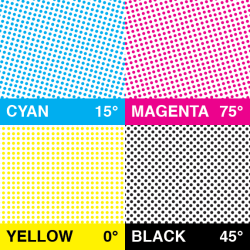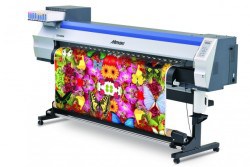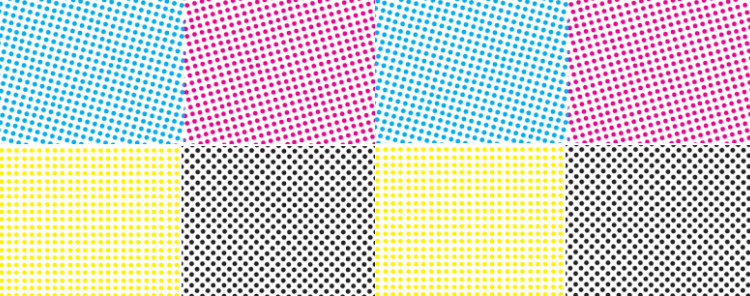This is how ink works in digital inkjet printing as compared with how dye works in dye sublimation printing.
In an ongoing process to educate my readers, first let me say this is a good question, though I’m going to spend a bit of time on the terminology of dye sub printing.
Ink Versus Dye
The first term is the term ink. Now, to the eye, ink and dye appear pretty much the same. They are both liquid, and both are printed using an inkjet printer. In our industry, the printers are usually wide format, maxing out currently around about 124 inches, or just over 10 feet.
However, the printing machine, or inkjet printer, does not see ink and dye the same, and they cannot be interchanged once a printer is printing either dye or ink without some down time as lines are flushed and the like. I can’t say what “the like” is, as I’ve never seen anyone convert a printer from ink to dye or from dye to ink.
The Inkjet Printer Ink
 Inkjet printer ink is based on the CMYK color spectrum, which stands for Cyan-Magenta-Yellow-Black, and prints down the yellow first, then magenta, then cyan, and finally black. I have often wondered why it wasn’t called YMCK instead, but maybe people would’ve confused it with the YMCA, who knows.
Inkjet printer ink is based on the CMYK color spectrum, which stands for Cyan-Magenta-Yellow-Black, and prints down the yellow first, then magenta, then cyan, and finally black. I have often wondered why it wasn’t called YMCK instead, but maybe people would’ve confused it with the YMCA, who knows.
An inkjet printer sprays fine dots of color, usually 300 dpi (dots-per-inch) up to 1440 dpi (unusual because the printing speed is much slower and therefore costlier, and for most commercial printing, the viewing distance makes it so you won’t see minor flaws that may be apparent at a lower dpi.
Inkjet ink is printed on the surface of an item such as vinyl banner material or vinyl decal material, and chemically “bites” into the surface of those materials and simply dries on the surface of the vinyl aided by heat and air flow, or an ultra-violet curing system that is either built in or added to the printer.
Sublimation Printing Dye
When converted to a dye sublimation printer, an inkjet printer doesn’t need a high dpi print to be make a fabulous print because the dye is printed on a treated paper called transfer paper as a mirror image.
Once the image is printed, the dye dries quickly on the paper, then it is joined together with a polymer-based fabric – usually polyester – and is moved to a heated pressure roller. As the material and paper are carefully fed through the rollers, several things happen.
First, the dye is converted to a gas. Simultaneously, the heat causes the cells of the polymer-based fabric or coating to expand and open up. The pressure from the rollers forces the gaseous dye into the open pores, sublimating the dye into the pores of the fabric, hence the term dye sublimation.
Why is it essential, in dye sublimation printing, for the ink to be sublimated in the fabric?
 As you can see, inks are used similarly but differently than the dyes are in sublimation. The dye becomes part of the actual fabric,whereas the ink can typically be removed from the surface of whatever it’s printed on with strong chemicals.
As you can see, inks are used similarly but differently than the dyes are in sublimation. The dye becomes part of the actual fabric,whereas the ink can typically be removed from the surface of whatever it’s printed on with strong chemicals.
With dye sublimation, the color also is diffused as a gas, therefore, rather than the dot pattern that you see with a loupe if you inspect a digital print, with dye sublimation you’ll see a continuous tone print, like a photograph, because the dots which were printed on the transfer paper, when they become gas, no longer retain the dot pattern, but a smoothly transitioning color into the next tone, thus, dye sublimation makes some of the most attractive printing available for dye sub fabric banners or display and even clothing.
Popular Posts:




